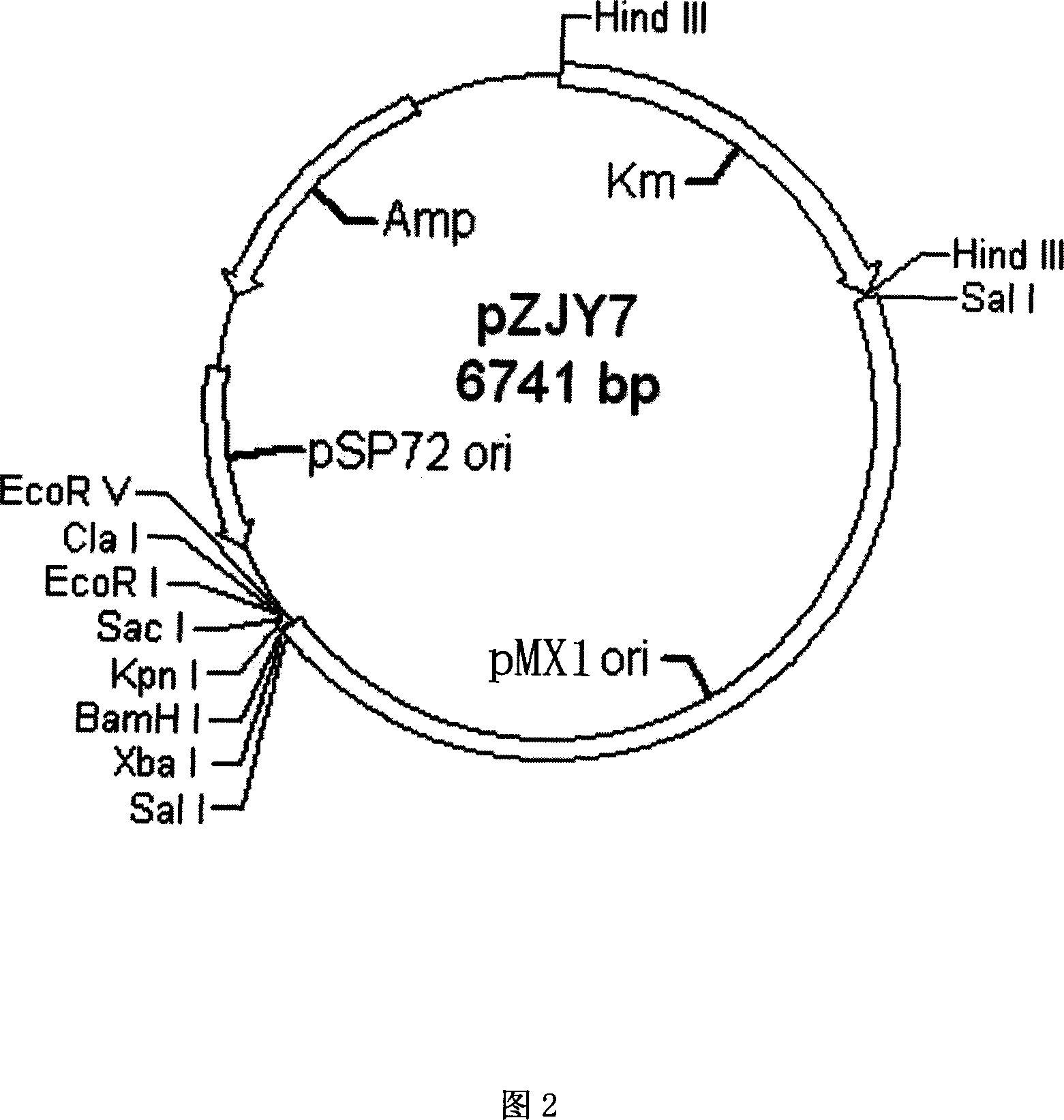Myxobacteria specific plasmid and its use
A technology of plasmid and Myxococcus aurantiacus, which is applied in the direction of bacteria, application, and the use of vectors to introduce foreign genetic material, etc., and can solve the problems of inability to effectively identify and utilize heterologous hosts
- Summary
- Abstract
- Description
- Claims
- Application Information
AI Technical Summary
Problems solved by technology
Method used
Image
Examples
Embodiment 1
[0025] Example 1. Isolation and cultivation of Myxococcus fulvus 124B02 CCTCC M 206081
[0026] Prepare myxobacteria enrichment medium WCX [CaCl 2 0.15%, agar 1.5%, cycloheximide 0.5% (added after sterilization), KOH adjusted to pH 7.0, prepared with distilled water]. Spread live E. coli cells on solidified WCX plates as a substrate for myxobacteria. Soil samples collected from the Changchun field in Jilin, China were evenly sprinkled on the fungus. The fruiting body of myxococcus was picked by micromanipulation and purified to obtain pure strain 124B02.
Embodiment 2
[0027] Example 2. Extraction of circular plasmids from myxobacteria
[0028]Inoculate the myxobacteria to be detected in 3ml of CTT [Casitone 1%, MgSO 4 8mM, Tris HCl (pH7.6) 10mM, potassium phosphate (pH7.6) 1mM, pH7.6] or VY-2 (Baker yeast 0.5%, VB 12 0.5mg / L, CaCl 2 0.1%, MgSO 4 ·7H 2 O 0.05%, pH7.2) liquid medium, and cultured at 30°C with shaking at 200rpm, and grown for 60-72h. Collect the cells by centrifugation, add 500ul TE25S [sucrose 10.3%, Tris HCl (pH8.0) 25mM, EDTA (pH8.0) 25mM] and lysozyme (final concentration 2mg / ml), suspend the cells, and incubate at 37°C for 1h , mix by inverting from time to time, add 250ul alkali lysate (NaOH 0.3M, SDS 2%), invert and mix 4-6 times, incubate at 55°C for 30min, add 250ul water-saturated phenol / chloroform / isoamyl alcohol (25:24: 1) Invert and mix well, centrifuge to take the supernatant, add an equal volume of Tris-saturated phenol / chloroform / isoamyl alcohol (25:24:1) to extract protein, centrifuge to take the supern...
Embodiment 3
[0029] Example 3. Extraction of linear plasmids from myxobacteria
[0030] The myxobacteria to be detected were inoculated in 3ml of CTT or VY-2 liquid medium, cultured at 30°C with shaking at 200rpm, and grown for 60-72h. Collect the cells by centrifugation, add 500ul TE25S and lysozyme (final concentration 2mg / ml), suspend the cells, incubate at 37°C for 1h, mix by inversion from time to time, add SDS (final concentration 1%) and protein K (final concentration 50ug / ml ), incubate at 37°C for 1 h, add an equal volume of Tris saturated phenol / chloroform / isoamyl alcohol (25:24:1) to extract protein, centrifuge to get the supernatant, and reuse an equal volume of Tris saturated phenol / chloroform / isoamyl alcohol (25:24:1) extract the protein until there is no obvious protein layer at the interface. The supernatant was collected by centrifugation, 1 / 10 volume of 3M NaAc and an equal volume of isopropanol were added to precipitate DNA for 0.5-1 h, the supernatant was discarded by ...
PUM
 Login to View More
Login to View More Abstract
Description
Claims
Application Information
 Login to View More
Login to View More - R&D Engineer
- R&D Manager
- IP Professional
- Industry Leading Data Capabilities
- Powerful AI technology
- Patent DNA Extraction
Browse by: Latest US Patents, China's latest patents, Technical Efficacy Thesaurus, Application Domain, Technology Topic, Popular Technical Reports.
© 2024 PatSnap. All rights reserved.Legal|Privacy policy|Modern Slavery Act Transparency Statement|Sitemap|About US| Contact US: help@patsnap.com









